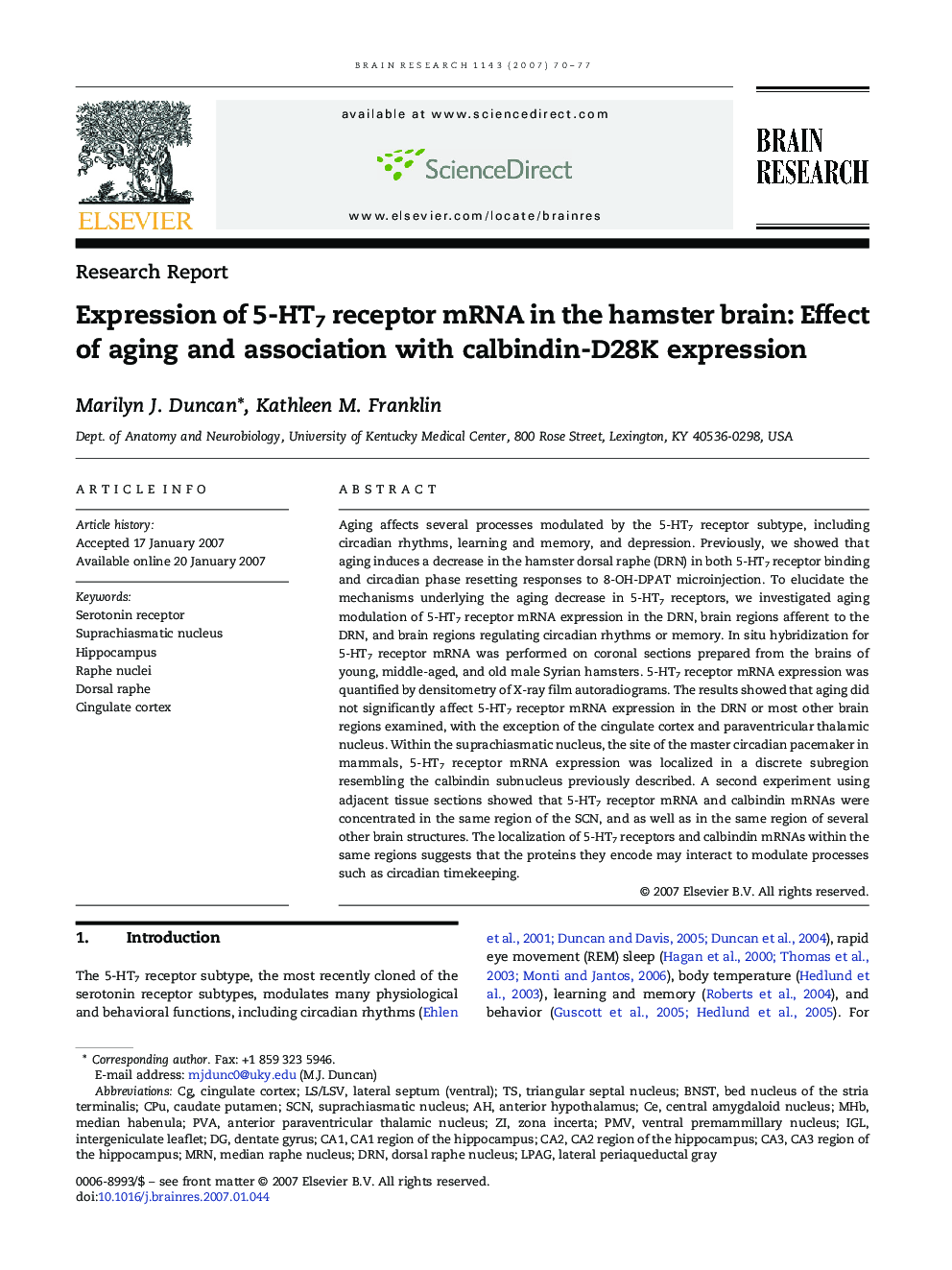| Article ID | Journal | Published Year | Pages | File Type |
|---|---|---|---|---|
| 4331294 | Brain Research | 2007 | 8 Pages |
Aging affects several processes modulated by the 5-HT7 receptor subtype, including circadian rhythms, learning and memory, and depression. Previously, we showed that aging induces a decrease in the hamster dorsal raphe (DRN) in both 5-HT7 receptor binding and circadian phase resetting responses to 8-OH-DPAT microinjection. To elucidate the mechanisms underlying the aging decrease in 5-HT7 receptors, we investigated aging modulation of 5-HT7 receptor mRNA expression in the DRN, brain regions afferent to the DRN, and brain regions regulating circadian rhythms or memory. In situ hybridization for 5-HT7 receptor mRNA was performed on coronal sections prepared from the brains of young, middle-aged, and old male Syrian hamsters. 5-HT7 receptor mRNA expression was quantified by densitometry of X-ray film autoradiograms. The results showed that aging did not significantly affect 5-HT7 receptor mRNA expression in the DRN or most other brain regions examined, with the exception of the cingulate cortex and paraventricular thalamic nucleus. Within the suprachiasmatic nucleus, the site of the master circadian pacemaker in mammals, 5-HT7 receptor mRNA expression was localized in a discrete subregion resembling the calbindin subnucleus previously described. A second experiment using adjacent tissue sections showed that 5-HT7 receptor mRNA and calbindin mRNAs were concentrated in the same region of the SCN, and as well as in the same region of several other brain structures. The localization of 5-HT7 receptors and calbindin mRNAs within the same regions suggests that the proteins they encode may interact to modulate processes such as circadian timekeeping.
